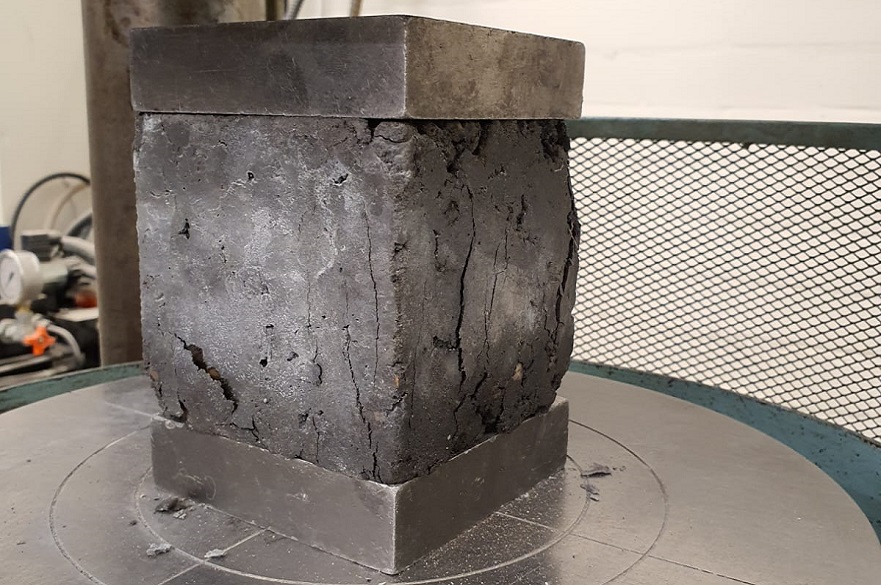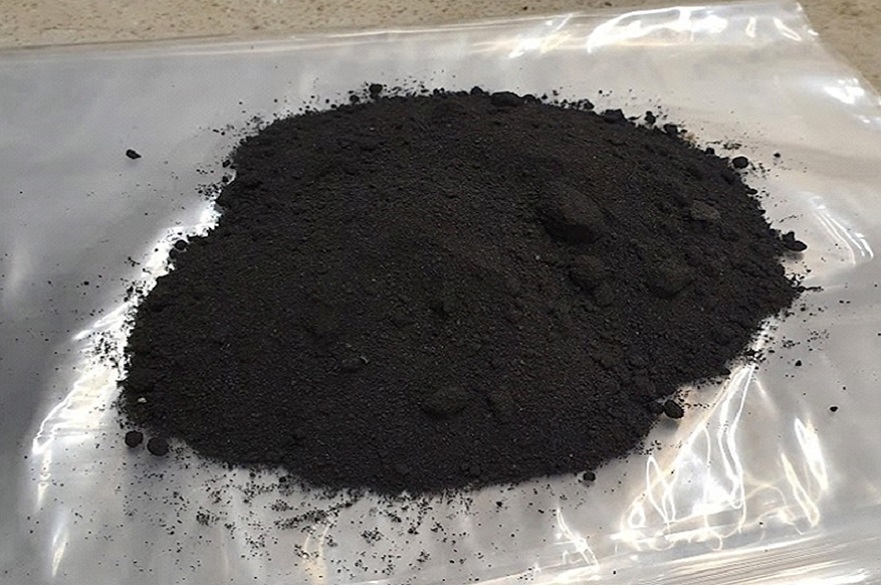Waste sand could be saved from landfill with new form of concrete
Up to 100 million tonnes of waste foundry sand could be averted from landfill worldwide and used to make a new form of concrete, research shows.
By Chris Birkle | Published on 20 September 2023
Categories: Press office; Research; School of Architecture, Design and the Built Environment;

Up to 100 million tonnes of waste foundry sand could be averted from landfill worldwide and used to make a new form of concrete, research shows.
A study by Nottingham Trent University (NTU) shows that waste foundry sand – which is a by-product the metal casting industry - could be used to make concrete that is suitable for withstanding lighter loads.
Led by Professor Amin Al-Habaibeh, an expert in intelligent engineering systems, the research shows that with a substitution ratio of up to 30 per cent, recycled waste foundry sand-based concrete has a compression strength of up to 78 per cent of normal concrete.
This makes it strong enough to use in concrete products such as curb stones, garden slabs, cycling pavements and other lighter loadbearing concrete products.
Professor Al-Habaibeh, of the School of Architecture, Design and the Built Environment, said: “The results suggest that waste foundry sand can be used in the production of concrete products when a reduction in strength is not critical.

Waste foundry sand
“This is good news for the environment, as it shows that the use of natural sand can be reduced, and therefore so can the need for sending waste foundry sand to landfill.
“By using waste foundry sand, the overall cost of concrete can be cut and CO2 emissions can be reduced during transportation also.”
Concrete is one of the fundamental materials in the construction industry. Typically, it is composed of sand, cement, aggregate and water.
Foundries purchase siliceous sands to create moulds that give shape to the melted metals they are casting. But these sands become waste after several uses and must be properly recovered or disposed of. Any improper disposal of waste foundry sand can cause environmental issues.
The research by NTU shows that concrete made with waste foundry sand has a compression strength of around 23 newtons per square millimetre (N/mm2).
PhD candidate Sirwan Faraj, a researcher in the School of Architecture, Design and the Built Environment at NTU, said: “In many sectors, recycling waste foundry sand, instead of using virgin materials, can result in a slight decrease in the technical performances of the final products.
“But this reduction could still be perfectly acceptable for a range of concrete products, depending on the needed application. It could be used effectively as a partial or complete replacement of standard sand in suitable quality mortars and concretes.”
Notes for Editors
Press enquiries please contact Chris Birkle, Public Relations Manager, on telephone +44 (0)115 848 2310, or via email.
Nottingham Trent University (NTU) received the Queen’s Anniversary Prize for Higher and Further Education in 2021 for cultural heritage science research. It is the second time that NTU has been bestowed the honour of receiving a Queen’s Anniversary Prize for its research, the first being in 2015 for leading-edge research on the safety and security of global citizens.
The Research Excellence Framework (2021) classed 83% of NTU’s research activity as either world-leading or internationally excellent. 86% of NTU’s research impact was assessed to be either world-leading or internationally excellent.
NTU was awarded The Times and The Sunday Times Modern University of the Year 2023 and ranked University of the Year in the Whatuni Student Choice Awards 2023. It was awarded Outstanding Support for Students 2020 (Times Higher Education Awards), University of the Year 2019 (Guardian University Awards, UK Social Mobility Awards), Modern University of the Year 2018 (Times and Sunday Times Good University Guide) and University of the Year 2017 (Times Higher Education Awards).
NTU is the 5th largest UK institution by student numbers, with approximately 40,000 students and more than 4,400 staff located across five campuses. It has an international student population of 7,000 and an NTU community representing over 160 countries.
Since 2000, NTU has invested £570 million in tools, technology, buildings and facilities.
NTU is in the UK’s top 10 for number of applications and ranked first for accepted offers (2021 UCAS UG acceptance data). It is also among the UK’s top five recruiters of students from disadvantaged backgrounds and was the first UK university to sign the Social Mobility Pledge.
NTU is ranked 2nd most sustainable university in the world in the 2022 UI Green Metric University World Rankings (out of more than 900 participating universities).
d most sustainable university in the world in the 2022 UI Green Metric University World Rankings (out of more than 900 participating universities).